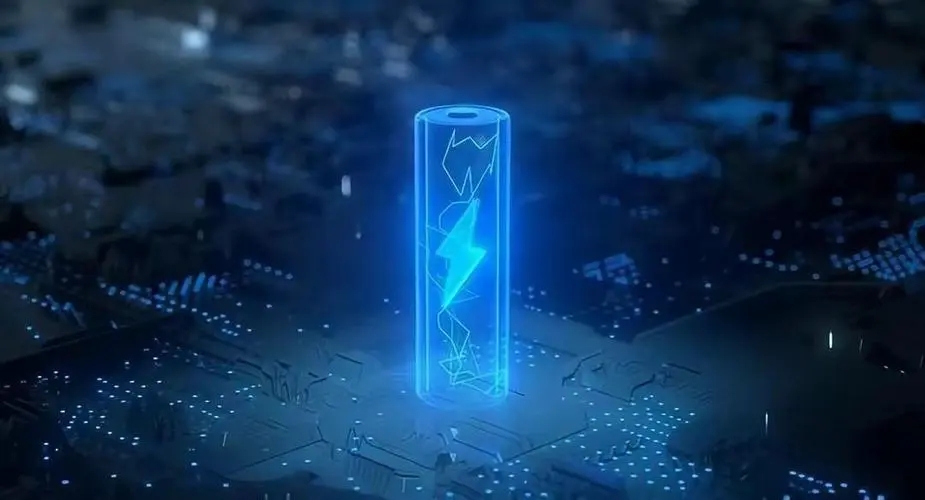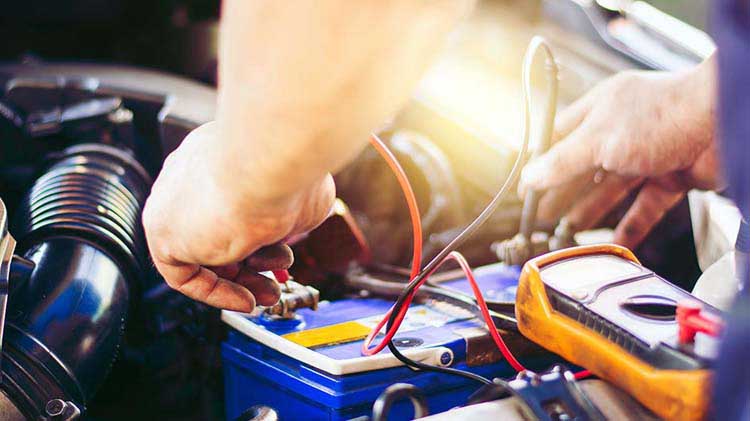Lifespan of a LiFePO4 Battery: Understanding its Longevity
As technology advances, more and more electronic devices are being introduced into our daily lives. With the increasing demand for these devices, the need for more efficient and long-lasting batteries has become a priority. Lithium iron phosphate (LiFePO4) batteries have gained popularity due to their high energy density, low self-discharge rate, and long cycle life. In this article, we will delve deeper into the lifespan of LiFePO4 batteries and how to ensure their longevity.
Understanding the Chemistry of LiFePO4 Batteries
LiFePO4 batteries are a type of rechargeable lithium-ion battery that uses lithium iron phosphate as the cathode material. The anode is made of carbon, while the electrolyte is a lithium salt. When the battery is charged, lithium ions move from the cathode to the anode, creating a flow of electrons that can be used to power electronic devices. During discharge, the process is reversed, and the lithium ions move back to the cathode.
One of the key advantages of LiFePO4 batteries is their stability. Unlike other lithium-ion batteries, they are less likely to overheat or catch fire due to their lower energy density. They also have a longer cycle life compared to other types of lithium-ion batteries, which means they can be charged and discharged more times before their capacity starts to degrade.
Factors Affecting the Lifespan of LiFePO4 Batteries
While LiFePO4 batteries are known for their longevity, their lifespan can still be affected by various factors. Here are some of the most important ones to consider:
1. Temperature
Temperature is one of the biggest factors affecting the lifespan of LiFePO4 batteries. High temperatures can cause the battery to degrade faster, while low temperatures can reduce its capacity. Ideally, LiFePO4 batteries should be stored and used at temperatures between 5°C and 40°C.
2. Depth of Discharge
The depth of discharge (DoD) refers to how much of the battery\’s capacity is used during each discharge cycle. The higher the DoD, the more the battery\’s capacity will degrade over time. To extend the lifespan of LiFePO4 batteries, it is recommended to avoid discharging them below 20% of their capacity.
3. Charging Voltage and Current
The charging voltage and current also play a crucial role in the longevity of LiFePO4 batteries. Overcharging or charging at too high a current can cause the battery to overheat and degrade faster. To prevent this, LiFePO4 batteries should be charged at a voltage and current level recommended by the manufacturer.
4. Storage Conditions
Finally, the way LiFePO4 batteries are stored can also affect their lifespan. When not in use, they should be stored at a 50% charge level in a cool, dry place. If they are kept fully charged or discharged for long periods, their capacity can degrade faster.

How to Extend the Lifespan of LiFePO4 Batteries
To ensure the longevity of LiFePO4 batteries, here are some tips to keep in mind:
1. Use a compatible charger: Always use a charger that is compatible with LiFePO4 batteries and follow the manufacturer\’s recommended charging voltage and current.
2. Avoid over-discharging: Try to avoid discharging the battery below 20% of its capacity.
3. Store at the correct temperature: Store LiFePO4 batteries at temperatures between 5°C and 40°C.
4. Store at 50% charge level: When not in use, store the battery at a 50% charge level in a cool, dry place.
5. Charge regularly: Charge the battery regularly to keep it at a healthy charge level and prevent over-discharging.
結論
LiFePO4 batteries are a reliable and long-lasting option for powering electronic devices. By understanding the chemistry of LiFePO4 batteries and the factors that affect their lifespan, we can ensure that they will continue to provide power for many years to come. By following the tips outlined in this article, you can extend the lifespan of your LiFePO4 battery and get the most out of your electronic devices.
-
 As an important branch of lithium-ion battery, lithium iron phosphate battery has occupied a place in the new energy field with its unique safety and stability. However, with the rapid development of new energy technologies and the intensification of market competition, we can't help but ask: Is lithium iron phosphate battery really a reliable choice in the new energy field?...続きを読む
As an important branch of lithium-ion battery, lithium iron phosphate battery has occupied a place in the new energy field with its unique safety and stability. However, with the rapid development of new energy technologies and the intensification of market competition, we can't help but ask: Is lithium iron phosphate battery really a reliable choice in the new energy field?...続きを読む -
 If you're looking to upgrade your motorcycle or other vehicle's battery, a 12V lithium starter battery could be the perfect choice for you. These batteries offer several advantages over traditional lead-acid batteries, including increased power, longer lifespan, and lighter weight. First and foremost, lithium starter batteries offer increased power compared to lead-acid alternatives. This means faster and more reliable...続きを読む
If you're looking to upgrade your motorcycle or other vehicle's battery, a 12V lithium starter battery could be the perfect choice for you. These batteries offer several advantages over traditional lead-acid batteries, including increased power, longer lifespan, and lighter weight. First and foremost, lithium starter batteries offer increased power compared to lead-acid alternatives. This means faster and more reliable...続きを読む -
 Introduction In today's rapidly evolving technological landscape, the demand for high-performance, long-lasting batteries is at an all-time high. From electric vehicles to renewable energy storage systems, the need for efficient charging solutions has become paramount. This article introduces the High-Efficiency 48V LiFePO4 Battery Charger, a cutting-edge power solution that offers optimal performance and durability. The Importance of High Efficiency...続きを読む
Introduction In today's rapidly evolving technological landscape, the demand for high-performance, long-lasting batteries is at an all-time high. From electric vehicles to renewable energy storage systems, the need for efficient charging solutions has become paramount. This article introduces the High-Efficiency 48V LiFePO4 Battery Charger, a cutting-edge power solution that offers optimal performance and durability. The Importance of High Efficiency...続きを読む -
 When it comes to boating, having a reliable power source is crucial for a smooth and enjoyable experience on the water. One of the most important components of a boat's electrical system is the marine battery, responsible for powering various onboard devices and systems. Investing in a high-quality marine battery is essential for any boat owner, as it provides the...続きを読む
When it comes to boating, having a reliable power source is crucial for a smooth and enjoyable experience on the water. One of the most important components of a boat's electrical system is the marine battery, responsible for powering various onboard devices and systems. Investing in a high-quality marine battery is essential for any boat owner, as it provides the...続きを読む -
 In today's world, electricity is the backbone of our daily lives. We rely on it for everything from powering our phones and laptops to running our cars and homes. One of the vital components of any electrical system is the battery, and ensuring that your battery is charged and ready to go is essential to the proper functioning of your...続きを読む
In today's world, electricity is the backbone of our daily lives. We rely on it for everything from powering our phones and laptops to running our cars and homes. One of the vital components of any electrical system is the battery, and ensuring that your battery is charged and ready to go is essential to the proper functioning of your...続きを読む -
 In today's fast-paced world, the need for convenient and efficient charging solutions is ever-growing. One such solution that has gained popularity in recent years is the 24V on board battery charger. This innovative device offers a convenient and efficient way to charge batteries on board vehicles and equipment. The 24V on board battery charger is specifically designed for applications...続きを読む
In today's fast-paced world, the need for convenient and efficient charging solutions is ever-growing. One such solution that has gained popularity in recent years is the 24V on board battery charger. This innovative device offers a convenient and efficient way to charge batteries on board vehicles and equipment. The 24V on board battery charger is specifically designed for applications...続きを読む -
 In today's fast-paced world, technology has become an integral part of our lives. From smartphones to laptops, we rely on these devices to stay connected and get things done efficiently. One such device that has revolutionized the way we interact with our computers is the wireless keyboard. Gone are the days of being tethered to our desktops by a cord....続きを読む
In today's fast-paced world, technology has become an integral part of our lives. From smartphones to laptops, we rely on these devices to stay connected and get things done efficiently. One such device that has revolutionized the way we interact with our computers is the wireless keyboard. Gone are the days of being tethered to our desktops by a cord....続きを読む

